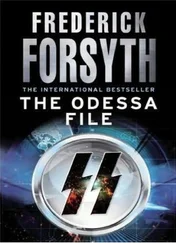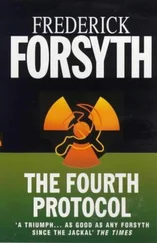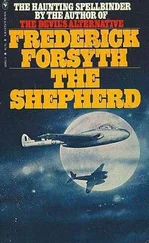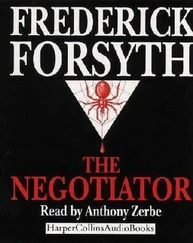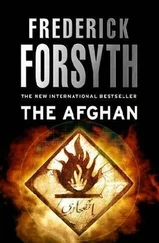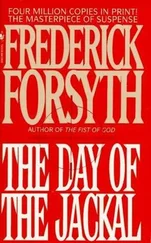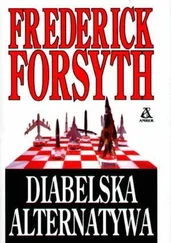But one of his coworkers in the laboratory was similar in appearance and he was of Hispanic origin. Tariq Hussein determined to secure a driver’s license in a more Spanish-sounding name and began to scour the Internet.
He was surprised by the simplicity. He did not even have to present himself in person nor write a letter. He simply applied online in the name of Miguel “Mickey” Hernandez, up from New Mexico. There was a fee, of course: seventy-nine dollars to Global Intelligence ID Card Solutions, plus fifty-five-dollar express delivery charge. The Virginia license to replace his “lost” one came in the mail.
But his principal research online had been for the right gun. He spent hours poring over the thousands of pages concerning guns and gun magazines. He knew more or less what he wanted and what he needed it to do. He just sought advice on which gun to buy.
He dawdled over the Bushmaster, used at Sandy Hook, but discarded it due to its lightweight 5.6mm bullets. He wanted something heavier and more penetrating. He finally settled on the Heckler & Koch G3, a variant of the A4 military assault rifle, using standard NATO ordnance of 7.62mm, which, he was assured, would tear through tinplate without shredding.
The online research engine informed him he would be unlikely to secure the fully automatic version under U.S. law, but the semiautomatic version would suit his purpose. It would fire a round for every time the trigger was squeezed — fast enough for what he had in mind.
If he was surprised at the ease of obtaining a driver’s license, he was bewildered by the simplicity of buying a rifle. He went to a gun show at the Prince William County Fairgrounds at Manassas, hardly an hour away and still in Virginia.
He wandered in some perplexity through the sales halls, offering an array of lethal weaponry sufficient to start several wars. Finally, he found the HK G3. On production of his driver’s license, the beefy salesman was delighted to sell him the “hunting rifle” for cash dollars. He just walked out with it and loaded it into the trunk of his car. No one raised an eyebrow.
The ammunition for the twenty-round magazine was just as easy, but from a gun shop in Falls Church. He bought a hundred rounds, an extra magazine and a magazine clamp, to clip the two mags together and give him forty rounds without the need to reload. When he had all he needed, he drove quietly back to his small house and prepared to die.
* * *
It was on the third afternoon that al-Afrit came to visit his new prize. From the bridge of the Malmö , Capt. Eklund saw the larger fishing dhow when it was already halfway between the shore and the ship. His binoculars picked out the suit of Mr. Abdi, beside a white-robed figure, under an awning amidships.
Jimali and his fellow pirates had been replaced by another dozen youths, who were indulging in a Somali practice the Swedish mariner had never seen before. When they boarded, the new guard crew brought with them large bundles of green leaves, not sprigs but bushes of them. This was their khat , which they were chewing steadily. Stig Eklund noticed that by sundown they were high on it. Then they varied between somnolent and easily angered.
When the Somali standing beside him followed his eyeline and spotted the dhow, he sobered up fast, ran down the companionway to the deck and shouted to his companions, lounging under the awning.
The old clan chief climbed the aluminum ladder to the deck, straightened and looked around him. Capt. Eklund had his cap on and saluted. Better safe than sorry, he thought. Mr. Abdi, who had been brought along as interpreter, made the introductions.
Al-Afrit had a lined and almost coal black face beneath his headdress, but his legendary cruelty showed in his mouth. In London, Gareth Evans had been tempted to warn Capt. Eklund but could not know who might be standing beside him. Mr. Abdi had also said nothing. So the captain was unsure exactly whose prisoner he was.
With Abdi tagging along to interpret, they toured the bridge and officers’ wardroom. Then al-Afrit ordered that all the foreigners line up on the deck. He walked slowly down the line, ignoring the ten Filipinos but staring at the five Europeans.
His gaze lingered for a long while on the nineteen-year-old cadet, Ove Carlsson, neat in white tropical ducks. Through Abdi, he ordered the youth to take his cap off. He stared at the pale blue eyes, then reached up and fondled the corn blond hair. Carlsson blanched and pulled away. The Somali looked angry but took his hand away.
As the party left the deck for the ladder, al-Afrit finally uttered a stream of Somali. Four of the guards he had brought with him jumped forward, seized the cadet and hustled him to the ground.
Captain Eklund rushed out of the line to protest. Abdi grabbed his arm.
“Do nothing,” he hissed. “It is all right, I am sure it will be all right. I know this man. Do not anger him.”
The cadet was forced down the ladder into more waiting hands in the dhow.
“Captain, help me,” he shouted.
Captain Eklund rounded on Abdi, the last man off his ship. He was red-faced with rage.
“I hold you responsible for this lad’s safety,” he snapped. “This is not civilized.”
Abdi, with his legs already on the ladder, was pale with distress.
“I will intervene with the Sheikh,” he said.
“I am going to inform London,” said the captain.
“I cannot permit that, Captain Eklund. It is about our negotiations. They are very delicate. Let me handle this.”
Then he was gone. On the way back across the swell to the beach, he sat in silence and cursed the old devil at his side. If he thought snatching the cadet would put pressure on London to raise the ransom price, he would ruin everything. He was the negotiator; he knew what he was doing. That apart, he feared for the boy. Al-Afrit had a reputation with the prisoners.
* * *
That evening, the Tracker called Ariel in his Centerville attic.
“You recall the short film I left with you.”
“Yes, Colonel Jackson.”
“I want you to screen it on the Jihadist Internet channel, the one the Preacher always uses.”
It went worldwide an hour later. The Preacher sat in his usual chair, talking directly into the camcorder and thus to the Muslim world. With an hour of preannouncements, the entire fan base would be listening, plus millions who were not converted to extremism but were interested, and every counterterrorist agency in the world.
They were all surprised, then riveted. The figure they saw was a hard-looking man in his early to mid-thirties, but this time he wore no covering drawn from his headdress over his lower face. He had a full black beard, and his eyes were of a strange amber hue.
Only one man watching knew that the eyes were contact lenses and that the speaker was Tony Suárez, who lived in Malibu and could not comprehend a word of the Koranic inscriptions on the sheet behind him.
The voice was accent-perfect, the tones of the British mimic who had listened to only two hours of previous sermons before producing an identical replication of the voice. And the screening was in color, not black and white. But to the faithful, it was undoubtedly the Preacher.
“My friends, brothers and sisters in Allah, I have been missing from your lives for some time. But I have not wasted my time. I have been reading, and studying our beautiful faith, Islam, and contemplating many things. And I have changed, inshallah .
“I wonder how many of you have heard of the Muraja’at, the Revisions of the Salafist-Jihadist cause. These are what I have been studying.
“Many times in the past, I have urged upon you all to dedicate yourselves not simply to worship of Allah, may His name be praised, but also to hatred of others. But the Revisions teach us that this is wrong, that our beautiful Islam is truly not a creed of bitterness and hatred, even of those who think differently from us.
Читать дальше

